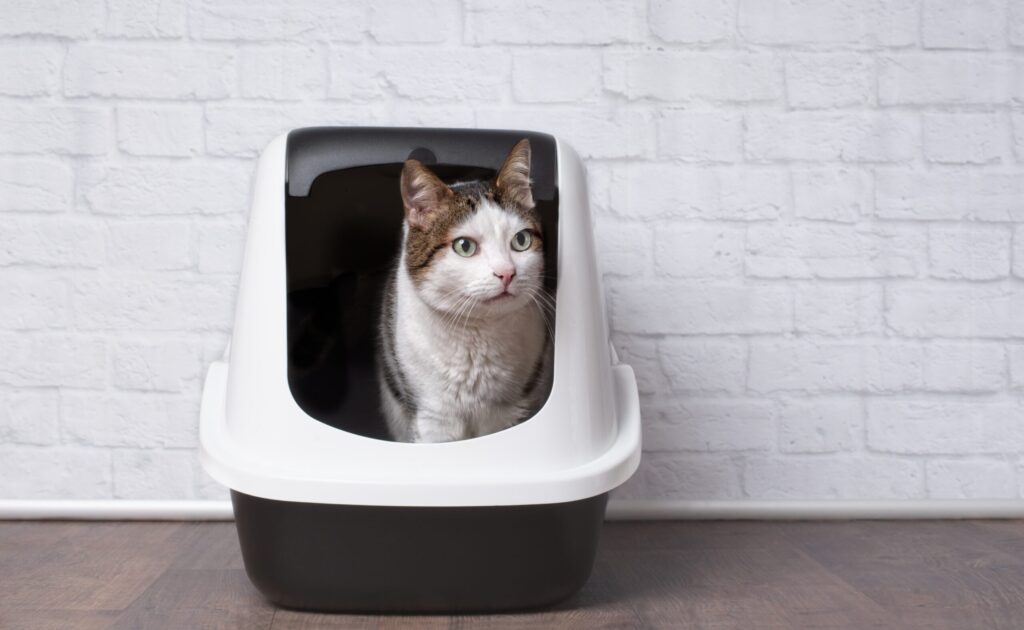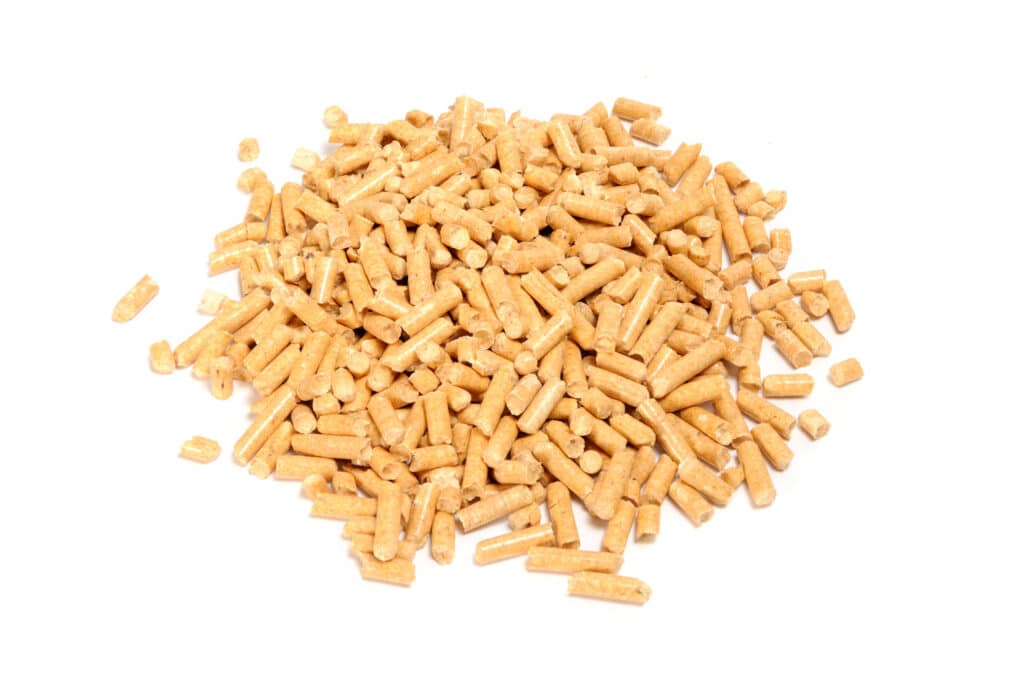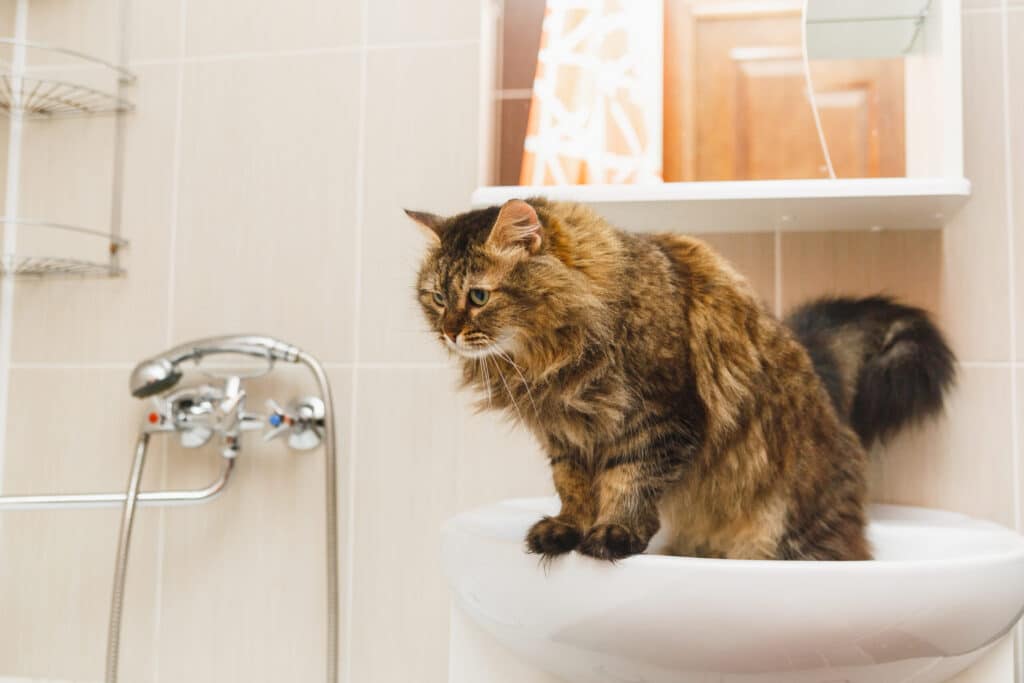Litter alternatives for cats: 7 inexpensive options
“What are the litter alternatives for cats ?” A question you might ask yourself when your usual brand of litter is not available, or the alternative brands are not to your cat’s liking.
Perhaps you are seeking a cheaper alternative, a backup for an emergency, or want to switch to a more nature-friendly option. You will be glad to learn that there are many cat litter alternatives available.
Switching to natural litters can also help to reduce your cat’s carbon paw print.
Homemade cat litter made of biodegradable and recycled materials is eco-friendly, dust-free, and free of chemicals. It is an excellent alternative to commercial cat litter if you or your cat have asthma or respiratory issues.
Natural litters are also free of fragrances that may prevent your pet from using the cat litter box.
Below we have put together the best list of DIY litter options for cats. Read on to learn more about the different options.
Isn’t it easier to buy cat litter?
There are reasons why its good to avoid commercial cat litter and use natural litters:
Cost-effective
You can save on the cost of buying cat litter by using homemade alternative cat litters.
Commercial cat litter can be expensive depending on the type and brand of cat litter you choose to purchase.
They will also run out fast as you need to change the cat litter every week, which is the frequency recommended by experts. For example, if you are using clumping cat litter, you will need a 40 lb bag per month per litter box. Depending on the brand and the quality, it can cost anywhere between $18 to $23 and upward for a 40 lb bag. When added up, it can cost you between $216 to $276 per year.
Health Issues
Some types of cat litter, especially clay-based varieties, generate a lot of dust. When cats inhale the dust, it can lead to allergic reactions, asthma, lung problems, and sometimes lead to even death.
The sodium bentonite which causes the clumping in a clay-based litter is toxic. All cats lick their paws after using the litter box, and ingesting the poisonous chemical in the litter is dangerous.
Traditional clay litters can lead to blockages in the intestine if ingested, even leading to the cat’s death. Sodium bentonite also poses a risk to the health of humans.
Environmental damage
Besides posing a health risk to your cat, some types of litter, such as clay-based ones, cause adverse environmental impacts. The clay used in the litter is obtained by strip mining, which damages forests, destroys wild animals’ natural environment, and dumps silt into rivers and seas.
Also, tons of clay-based litter ends up in landfills, polluting the environment further.
Though some types of litter may be labeled as safe to flush down the toilet, they may end up polluting water sources.
Sustainability concerns
Environmentally conscious pet parents will be interested in using sustainable and biodegradable litter from natural sources in place of clay cat litters or crystal litters.
To complement your sustainable and self-reliant lifestyle, you can opt for homemade litter alternatives that are natural, biodegradable, free of toxins, and renewable.
Backup for emergencies
Perhaps you have found a commercial cat litter brand that is inexpensive, non-toxic, environment friendly, and sustainable. Still, it will be helpful to know litter alternatives for cats, just in case you run out of your cat’s preferred commercial litter.
Knowing homemade litter alternatives can help you present other options to your cat when the preferred brand is out of stock.
Below are 8 popular litter alternatives for cats:

1. Newspaper litter for cats
Before commercial cat litter became popular, cat parents used paper as a lightweight litter for their cats. It is easy to make shredded newspaper cat litter.
Making your own newspaper litter
1. Use a paper shredder to shred newspaper or junk mail and collect the shredded pieces in a cat litter box
2. Soak the shredded paper in warm water mixed with a few drops of dishwashing soap.
3. Empty the water and soak again in warm water but without the soap this time.
4. Scatter baking soda on the wet paper and knead into the mixture while wearing gloves
5. Squeeze out any remaining water so that it is as dry as possible.
6. Break it into small fragments and allow it to dry for a few days.
7. You can put the dried fragments in the litter box; make sure to scoop the solid waste daily and change the newspaper litter once a week.
It will require about 45 minutes to make enough newspaper litter to see you through for about 3 weeks.
Disadvantages of using paper cat litter as an alternative
The main disadvantage of using paper litter is that you will require a lot of newspaper or just paper. However, you can ask neighbors for newspapers, shred unwanted paper lying around your home, or even collect shredded paper from your office.
2. Wood shavings
Wood shavings are not something that you can make at home unless you have a woodworking shop. However, wood shavings can work effectively as an alternative litter box liner. They are inexpensive as well.
Where can you get wood shavings?
You can get wood shavings at most feed stores. They are inexpensive, and the natural scent of the wood is good at covering up the smell of ammonia in cat urine. You can also contact a local woodworking company to get the wood shavings free.
3. Chicken feed
Chicken feed or chick starter crumbles are some of the excellent alternative kitty litters. Chicken feed can be scooped out, clumps, and controls odor.
Chicken feed is available at feed stores and home stores. You can get a 40-pound bag for around $10.
Chicken feed is a combination of ground corn and other grains. It has the same texture as litter but not dusty and poses no risk even if your cat accidentally ingests a bit. It is also biodegradable, unlike clay litter.
4. Sand
Outdoor cats excrete in the sand as it allows them to bury their feces quickly by sweeping sand with their paws in a backward motion.
In an emergency or when you require an inexpensive option, you can offer sand as an alternative type of litter to your cat.
Since wild cats use sand to do their business, cats have a natural attraction to sand.
Sand also clumps effectively and retains the odor of urine.
Sand may not trap ammonia odor in cat urine effectively. You can enhance urine odor control by mixing a cup of baking soda with the sand before adding it into your cat’s litter box.
5. Alfalfa pellets
Alfalfa pellets, a typical rabbit food, can also work effectively as a substitute cat litter.
Alfalfa pellets are biodegradable and environmentally friendly. But don’t fill the cat litter box with too many alfalfa pellets as you may see more dust, and there is an opportunity for the litter to get outside the box.
You can also use rabbit food pellets, which are tiny cylinders of alfalfa. It eliminates odor, clumps and is flushable if broken up a bit.
6. Wood pellets

Wood pellets are an excellent substitute for commercial cat litter.
Wood pellets absorb cat urine, odor and ultimately crumble into sawdust that settles to the bottom of the cat litter box. The fresh pellets remain on top.
As part of your cleaning regimen, you should scoop out the solid waste and some sawdust daily. The entire contents of the cat litter box need to be changed only once in two weeks.
The main advantages of using wood pellets include:
- Very economical: It is one of the cheapest alternative litters for cats that you can get.
- Environment friendly: Wood pellet cat litter is composed of a natural material that is renewable and biodegradable
- Less tracking: Because the pellets are too big to get stuck on your cat’s paw, there is less tracking.
- Chemical-free: Wood pellets such as pure pine pellets are free of synthetic chemicals
- Less dust: It has minimal dust compared to traditional cat litter.
- Absorbent: Wood pellets are more absorbent than clay and will last you longer than 1 lb of clay litter.
7. Potting soil
Just like sand, cats use soft soil to do their business and bury the solid waste. If you can find a way to keep the soil from getting scattered all over your house, then potting soil is another litter substitute for your indoor cat.
If you are looking at potting soil to save on costs, one way to prevent the dirt from getting scattered everywhere is to place many cat litter mats around the litter box. You will have to clean the litter mats frequently to keep the area clean. Also, remember to mix the soil with baking soda to control the odor.
Use only untreated and chemical-free potting soil; the soil from your backyard may contain germs or chemicals.
You can also allow your cat to use a part of your yard to do his business. Allowing your cat access to your yard will save on costs altogether and keep your indoor area clean.
Your cat will like soil because they are naturally drawn to it, and of course, you will also save on cost.
However, the disadvantage of using potting soil is that it’s highly trackable, messy, doesn’t clump, doesn’t lock in odors, and can be a carrier of germs.
8. Train your cat to use the toilet

When looking at alternatives to cat litter, don’t ignore the benefit of toilet training your cat.
Since cats are intelligent and capable of climbing, you can train them to use your toilet.
You can start the process by buying a toilet training kit for cats.
Not for all cats
However, not all cats should be toilet trained. Toilet training is suitable for cats who are curious and eager to learn. It also works well with young cats that are not yet set into a routine.
Some cats may be afraid to use the toilet bowl. You should never force your cat to continue the training if you sense that he is getting stressed.
A cat with medical issues such as arthritis cannot stabilize himself over the toilet bowl. You should provide him with a litter tray with low borders on the ground.
Not recommended for multi-cat homes
If you have a multi-cat home, don’t attempt toilet training. Cats like to have their place to do their business, and if your cat has to share the toilet with other cats, it will lead to a lot of stress and even accidents around the house.
Suitable for homes with more than one toilet
You should also try toilet training only if you have multiple toilets in your house.
Toilet training is not recommended if you have to share your bathroom with your cat.
Cats need a quiet and calm place to do their business, and having one toilet for both of you will not work. Your cat will feel stressed if you keep barging into the bathroom or wait outside restlessly to enter.
A word of caution to cat owners
The above list of litter alternatives for cats is suitable for budget-conscious pet owners or those who need a natural product as an alternative during an emergency.
However, it is essential to remember that you may face high tracking with homemade cat litter, and it can also be messy.
Potting soil, for example, can create a mess around the house, and not all wood shavings are recommended for cats. Some wood shavings can be toxic, so make sure to find out first before using them as a substitute litter for your cat.
Conclusion
Do you have a favorite substitute litter? In case you have not tried any of the litter alternatives for cats listed above, make sure to do the following before making the change:
- Prepare your homemade cat litter
- Add the cat litter to a separate cat litter box
- See how your cat responds to the new litter
- If your cat likes the new litter, you now have an alternative to use in emergencies






